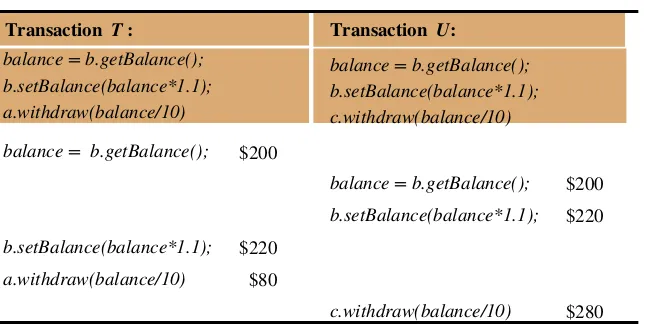Slides for Chapter 13: Transactions and Concurrency Control - Chapter 13 slides
Bebas
39
0
0
Teks penuh
(2)
(3)
(4)
(5)
(6)
(8)
(9)
(10)
(11)
(12)
(13)
(14)
(15)
(17)
(18)
(19)
(20)
(23)
(24)
(25)
(28)
(29)
(30)
(31)
(32)
(33)
(34)
(35)
(36)
(37)
(38)
(39)
Gambar




+7
Dokumen terkait





